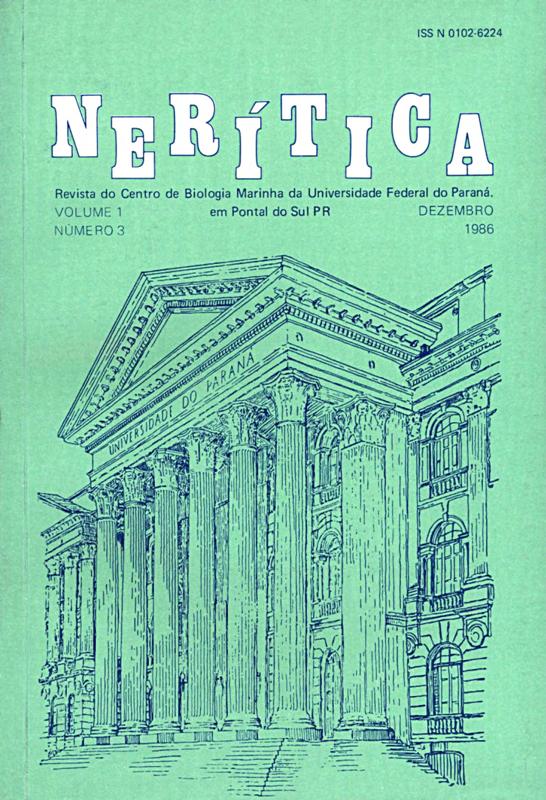COMPOSIÇÃO E DISTRIBUIÇÃO DO FITOPLÂNCTON EM ÁREAS COSTEIRAS E OCEÂNICAS DA REOIAO SUESTE DO BRASIL
DOI:
https://doi.org/10.5380/rn.v1i3.41192Palavras-chave:
Phytoplankton, Composition, Distribution, Southeastern Coast (Brazil), Fitoplâncton, composição, distribuição, Região Sueste (Brasil)Resumo
Total phytoplankton samples and hydrographical parameters were collected from the surface of 16 stations located in the southeastern sector of the brazilian coast during the autumn cruise of the R/V “ Almirante Saldanha” . The limits of temperature (22 — 25°C) and salinity (35,0 — 37,1 x 10‘s) observed indicated the great influence of the Tropical Water over the sampling area where the oligotrophic condition is certainly due to the low nutrient concentrations of this watermass. Phosphate, nitrate and silicate ranged from 0.0 to 0.63, 1.41 to 5.69 and from 4.10 to 25,25 ftg-at.r1, respectively.
The most frequent diatoms were Coscinodiscus spp, Coscinosira sp, Pleurosigma sp, Pseudoeunotia doliolus, Thalassionema nitzschioides, Thalassiothrix frauenfeldii and T. mediterrânea, among 49 species observed. Prorocentrum and Protoperidinium spp dominated the dinoflagellate population although the genus Ceratium was represented by a greater number of species. Cyanophycean cells were abundant in coastal (Anabaena sp) and oceanic (Trichodesmium erythraeum) samples.
The phytoplankton community was numerically dominated by nanoplanktonic organisms like phytoflagellates (including monads) and the coccolithophorid Coccolithus huxleyi. The phytoplankton association observed in the present study is typical of oligotrophic warm waters of the Brazil Current.
Amostras de fitoplâncton total e parâmetros hidrográficos foram obtidos na superfície de 16 estações localizadas no setor sudeste da costa brasileira durante o outono de 1983. Os limites de temperatura (22 — 25°C) e salinidade (35,0 — 37,1 x10 “) observados indicaram a influência da Água Tropical na área estudada onde as condições oligotróficas são devidas à baixa concentração de nutrientes nessa massa d’água. Fosfato, nitrato e silicato variaram entre 0,0 e 0,63, 1,41 e 5,69, e 4,10 e 25,25 /ig-at.r1, respectivamente.
As diatomáceas mais freqüentes foram Coscinodiscus spp, Coscinosira sp, Fleurosigma sp, Pseudoeunotia doliolus, Thalassionema nitszchioides, Thalassiothrix frauenfeldii e T. mediterrânea, dentre as 49 espécies observadas. Prorocentrum e Protoperidinrum spp dominaram a população de dinoflagelados apesar do gênero Ceratium ter apresentado o maior número de
espécies. As cianofíceas Anabaena sp e Oscillatoria (=Trichodesmium) erythraeum foram abundantes nas amostras costeiras e oceânicas.
A comuindade fitoplanctônica foi numericamente dominada por organismos do nanoplâncton, tais como fitoflagelados (incluindo-se mônadas) e o cocolitoforídeo Coccolithus huxleyi. A associação fitoplanctônica observada no presente trabalho é típica das águas quentes e oligotróficas da Corrente do Brasil.



